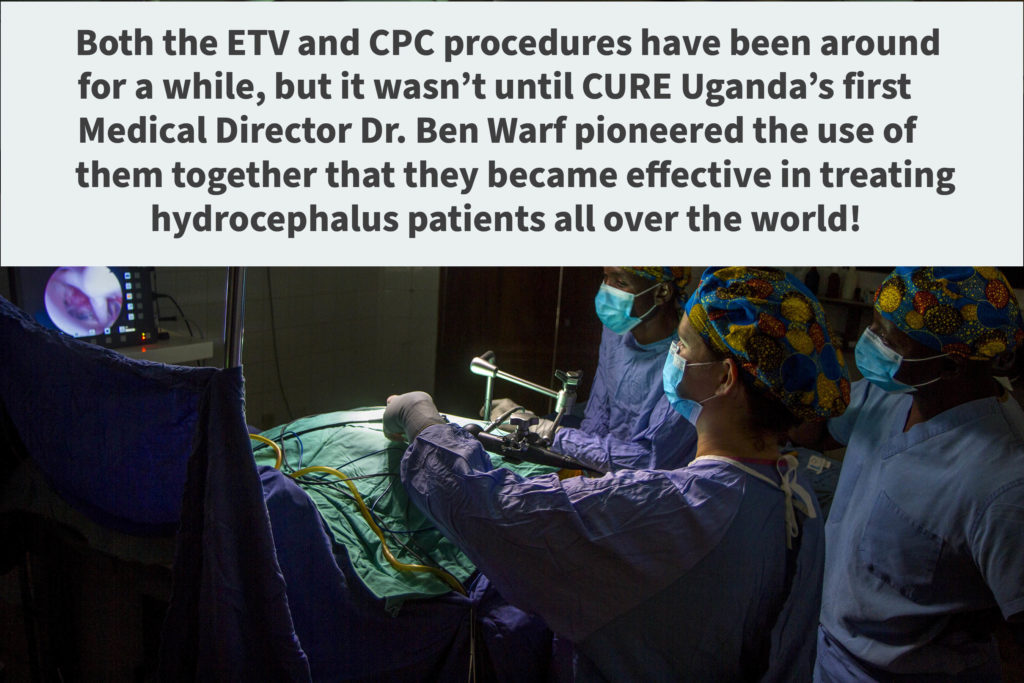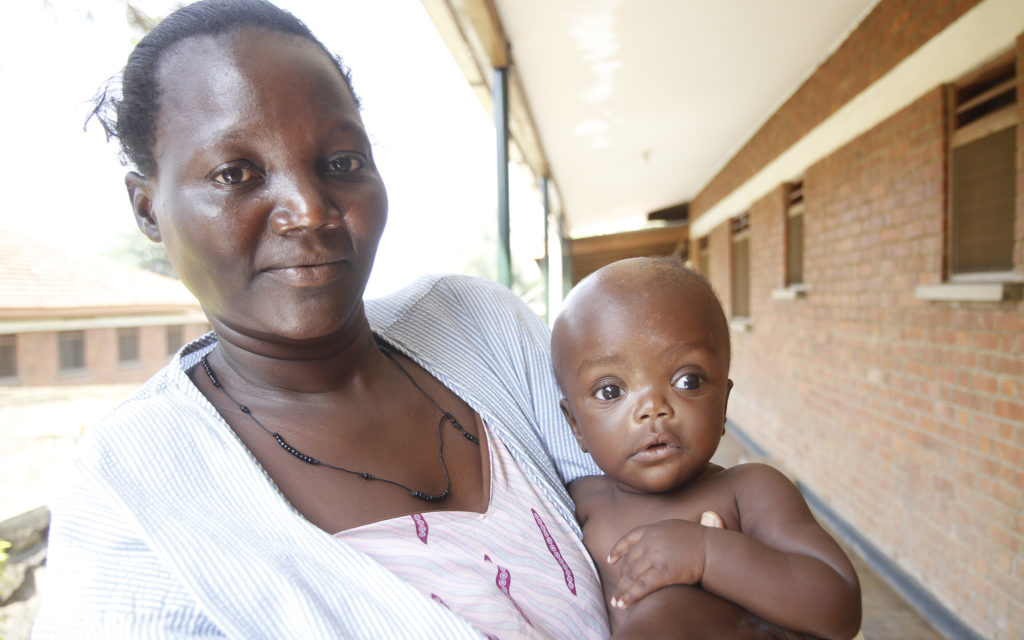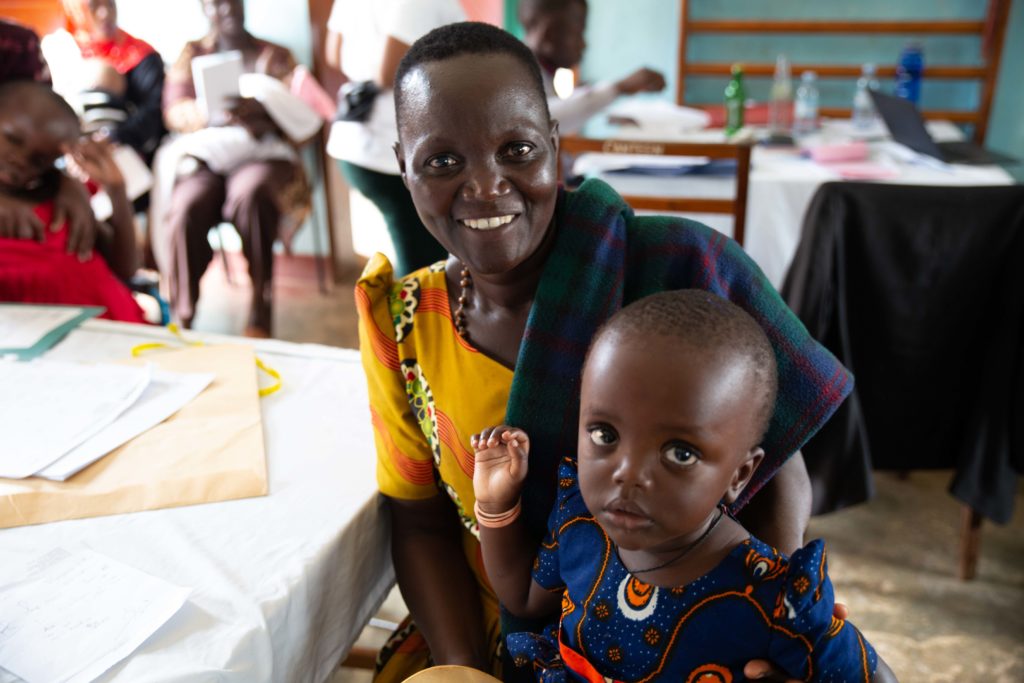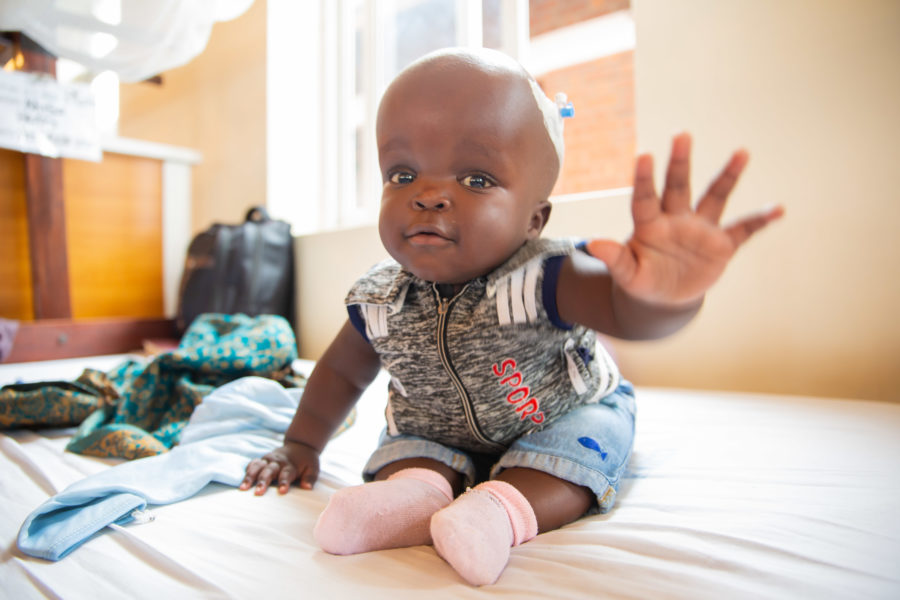Conditions we treat: Hydrocephalus
This blog is part of an ongoing series looking to explain the common conditions CURE treats in ways that all of us non-medical folk can understand.
Hydrocephalus is the main condition treated at CURE Uganda, but before we jump into what it is exactly, we need to rewind a little bit.
We’ve all got this thing called “cerebral spinal fluid” (CSF) floating around in our head and spine. It essentially acts as a cushion for all those important parts. Our brains are always making fresh CSF and the old CSF gets drained out before being reabsorbed into the rest of our body.
There are a few problems that cause hydrocephalus, but they’re all related to CSF. When a CURE Uganda patient has hydrocephalus their brain is either:
- Making CSF faster than their brain can drain it
- Unable to drain CSF at all
- Both of the above
For all three scenarios, hydrocephalus creates a situation where there is too much fluid inside the baby’s skull and, with nowhere to go, the baby’s head begins to swell up – not unlike a water balloon filling up. Baby’s skulls are soft and still flexible up until a certain age, but even with this flexibility, there is only so much fluid that can be accommodated in a small space and a dangerous amount of pressure can begin to build inside the baby’s skull. This pressure is what pushes the still soft skull outwards, creating the enlarged head look associated with hydrocephalus. But more dangerously, this pressure also pushes in on the brain. If the pressure isn’t relieved, it can cause blindness (as our eyes are connected to our brain), brain damage, and eventually death.
Hydrocephalus is a fatal condition, but thankfully there is treatment! The preferred treatment is a surgery called an ETV/CPC which is actually a two part procedure:
- The ETV (Endoscopic Third Ventriculostomy) essentially goes into the baby’s brain and opens up a small hole through which the excess CSF can drain out of.
- The CPC (Choroid Plexus Cauterization) then goes in and decreases the amount of CSF the brain is able to make.

Between decreasing the amount of CSF being produced and opening up a drainage pathway, the ETV/CPC is effective in treating many hydrocephalus patients. Patients like Divine who developed hydrocephalus early on in her infancy. Thankfully, Divine’s mother Teddy knew about hydrocephalus and just how dangerous it could be. Teddy rushed Divine to their local hospital where they were referred to CURE Uganda which is known throughout all East Africa as specialists in the treatment of hydrocephalus. While at CURE Uganda, Divine received an ETV/CPC and was soon discharged home. We recently checked in with Teddy and Divine and Teddy bragged that Divine is not only alive, but walking, talking, and even singing – all things their family were not sure she would ever be able to do!

Divine with her mother Teddy before surgery 
Divine and Teddy after surgery at a check-up
In the cases where an ETV/CPC is not possible or effective, the traditional way of treating hydrocephalus patients is the installation of a small pump or “shunt” in the patient’s brain. This shunt manually removes CSF from the patient’s brain and drains it outside the skull to be reabsorbed back into the body.
Overall, hydrocephalus is a serious condition that can be fatal for a child if it is not treated. Thankfully, CURE Uganda is internationally renowned in the treatment of hydrocephalus, and thanks to your support of the work done there, thousands of lives are saved from hydrocephalus every year!
One of the beautiful things about CURE is that it allows everyone to participate in the life-transforming surgeries that are provided daily at the CURE hospitals all around the world. You don’t need to be able to understand words like bilateral, ventricle, genu valgum, congenital, or cerebral-spinal fluid to take part in the life-changing and life-saving work that is done. But with this said, having an understanding of the conditions CURE treats does allow a deeper appreciation of just how important the work your donation is enabling the CURE staff to do! Thank you.
Footnote: Article written on Monday 11th January 2021 by Joel Witwer, Lead Storyteller
